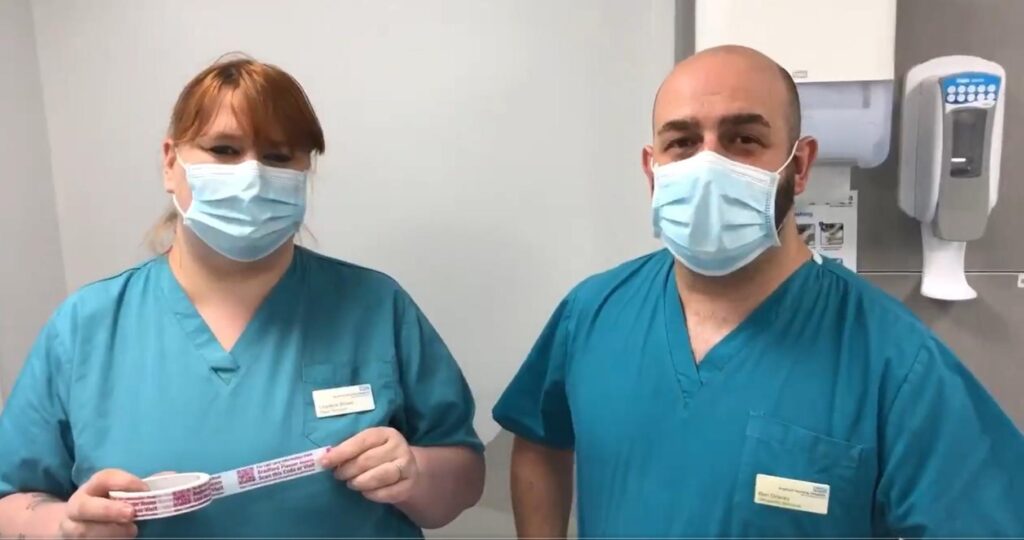
Bradford Teaching Hospitals’ innovative Plaster team’s cracking idea to help patients look after their casts has scooped a national award.
Their brainwave to put a simple QR code – machine-readable optical label – on casts, which links patients to a whole raft of useful information, wowed judges at the Nursing Times Awards last night (27 Oct) and won the Technology and Data in Nursing prize
Based at Bradford Royal Infirmary, Plaster Technicians, Charlene Brown and Ben Gracey, were responsible for the invention which launched in 2020, supported by Consultant Orthopaedic Surgeon, Gary Hannant and Fragility Fracture Liaison Sister, Janine Connor.
Charlene said: “The idea came about because we were constantly getting calls from patients who had been fitted with a cast, asking questions about how to care for them – despite us giving them the advice they needed before they left hospital!
“These were always the same kinds of questions such as ‘can I get my cast wet?’, ‘it feels tight and uncomfortable, is this normal?’, ‘it’s giving me pins and needles; do I need to come back?’ and even ‘can I take it off?’ It was obvious that patients were just not listening to what we were telling them and this meant spending ages answering phone calls trying to explain things.”
Charlene had heard that a hospital in Liverpool had looked in to placing a QR code onto a patient’s plaster cast but didn’t take the idea any further, so she decided to investigate whether Bradford could develop its own system.
She set about contacting plaster rooms the length and breadth of the country – as well as abroad – to see if anyone had produced something similar. In total, Charlene contacted 120 hospitals – 48 of them in the UK and others in the U.S., Canada, Australia, Dubai and France!
“It soon became clear we were going to be the first in the world to do this,” said Charlene. “When we started making enquiries we knew that the only other hospital with a QR code was in Cornwall. However, their QR code linked to their website only, and we wanted to see the benefits from linking a code directly to the relevant cast care pages.”
The QR code is printed on very strong, adhesive, waterproof tape which is fixed to the cast and there are different codes for the different types of cast – arm, leg, foot, elbow etc. All the patient then needs to do is scan the code with a device – it doesn’t even need to be the latest smartphone – and the patient is linked to the relevant cast care page. There’s no scrolling through to find ‘arm’, ‘leg’, ‘elbow’ etc. The information they see is relevant to them.
They can then read about cast care, see answers to the most common questions and problems and even ‘meet’ the plaster team. They can also click on an interactive ‘pressure spot’ which takes them to self-help videos as well as exercise videos to help with their recovery.
ENDS …
